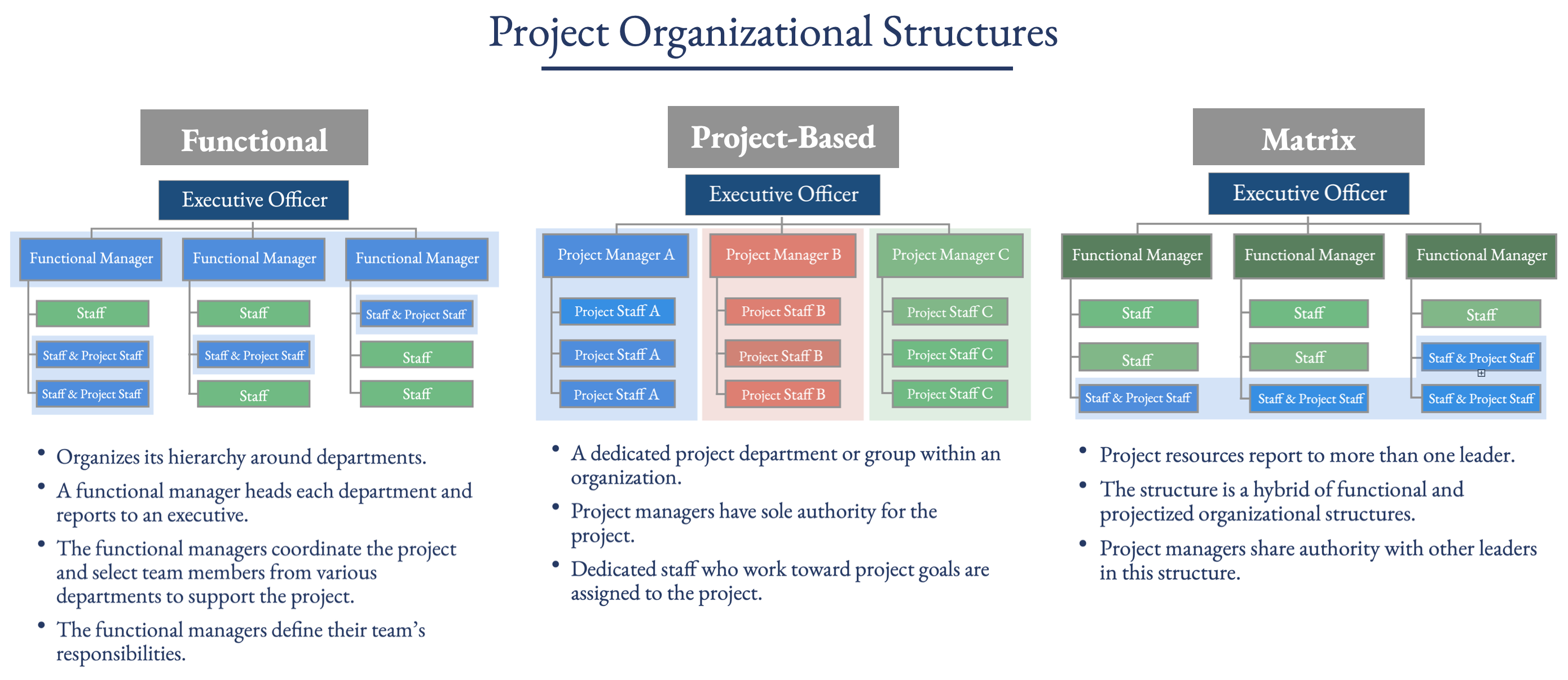Welcome to the third in our 4-part blog series on program and project governance. In the first and second part of our series we discussed the differences between programs and projects; introduced the set of rules, procedures, and policies that determine how programs and projects are controlled, managed, and overseen; and discussed some of the key considerations when setting up program and project governance in your organization. In this post, we will discuss the committees, bodies, and structures that are part of successful governance.
 Four Types of Committees, Bodies, and Structures:
Four Types of Committees, Bodies, and Structures:
- Executive/Project Steering Committee
- Program Governance Office
- Project Management Office
- Project Organizational Structure
Executive/Project Steering Committee
- A form of corporate governance made up of high-level executives, authorities, and/or stakeholders who provide strategic oversight and guidance to one or more programs or projects within an organization.
Program Governance Office
- Ensures that the program’s goals and objectives are aligned with those of the overall enterprise.
- Standardizes project-related governance processes and facilitates effective communication and the sharing of resources, methodologies, tools, and techniques. It establishes the overall framework for execution of a corporate program, and it develops and implements policies, rules, and procedures to manage the program.
- Collects data to monitor, analyze, and report on how well the program conforms with these policies, rules, and procedures; remediates any problems or vulnerabilities within the program.
- Ensures standardization for projects across an entire program.
Project Management Office
- Established for the duration of a single project or program.
- Includes project delivery oversight, administrative support, controlling, reporting, and monitoring functions.
- Performs a similar function to the Program Governance Office–only for a single project as opposed to an overall program.
Project Organizational Structure
- Defines the reporting hierarchy and authority of people involved in a specific project. The structure defines each team member’s function for the duration of a project and the reporting lines can be viewed in chart form.
- There are three types of organizational structures in project management:
-
-
-
- Functional
- Project-based
- Matrix
-
-

See Essential Guide to Project Organizational Structure for more information and graphics inspiration.
Successful program and project governance are dependent on establishing and supporting the committees, bodies, and structures that approve and oversee budgets, timelines, project definition and scope, resources, and business outcomes. In the next part of this series, we will discuss the tools used to manage your IS programs and projects:
- Decision-making rights & tools
- Stakeholder decision-making matrix
- RACI
- RAID log
- Reporting & status management
Reach out via email if you have questions on project governance that we can address on the blog or one-on-one. We conclude this series with our next post, and we’ll continue to answer incoming questions on LinkedIn as well.
——————
Here are links to all 4 blog posts in this governance series: Part I: Understanding Programs vs. Projects | Part II: Defining Rules, Procedures, and Policies | Part III: Defining Committees, Bodies, and Structures | Part IV: Decision-making Rights and Tools




